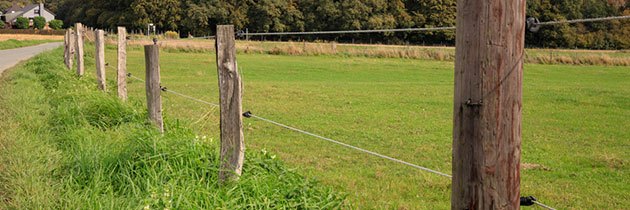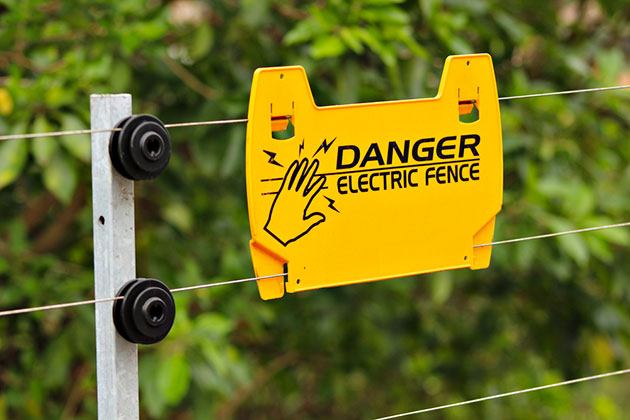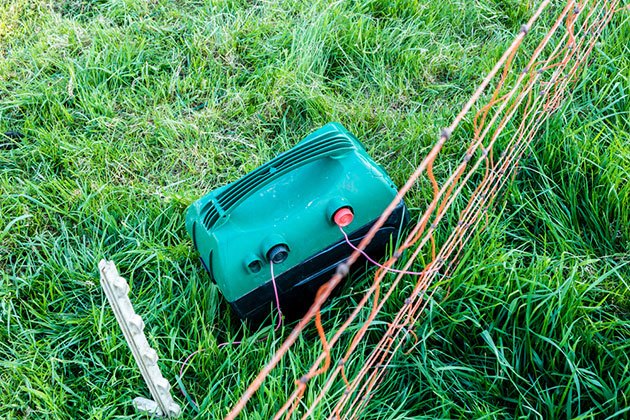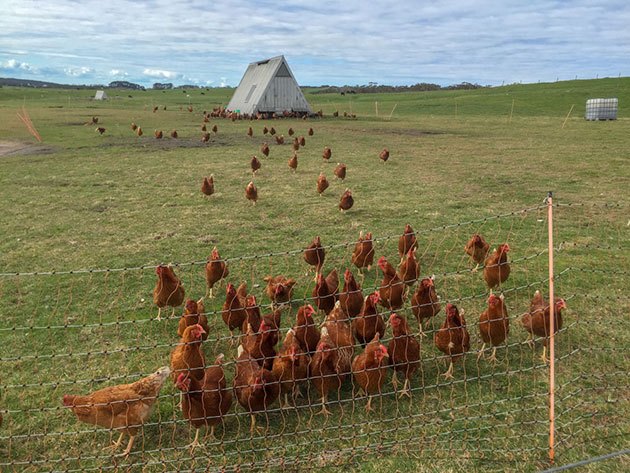Regardless of the purpose, your electric fencing is both time and cost-effective.
The fence will deter predators, keep animals and livestock in, and provide advanced protection to your property.
However, you must ensure it’s working correctly to provide many benefits. Besides, it’s easy to clean and maintain regularly.
But, how can you keep your electric fence maintenance optimal? Examine the guidelines below.
Table of Contents
How Do You Maintain an Electric Fence?
You must check your electric fence at the end of each season.
In addition, you must complete the required maintenance and install all the necessary components to make the electric fence work correctly and efficiently.
But, what are the main steps? Check below.
Electric Fence Maintenance Checklist
Examine each part of your electric fencing at the end of every season to ensure all components are optimal.
Thus, even if something doesn’t work, you can replace the parts and make your electric fencing optimal for the next season.
There are multiple electric fencing components, so it’s crucial to know where exactly the main issues lie to carry out an electric fence repair and make it optimal again.
So, here’s your exclusive electric fence maintenance checklist:
1. Fence posts

Incorrect fence posts are the first sign of fencing issues.
Are the fence posts sturdy and reliable enough? Is any of the posts rot and requires a replacement? Keep an eye on the fence posts.
Severely rusted or rotten posts may ruin the whole construction, causing the fence to fall over.
So, replacing the old posts and installing new ones will reduce the damage & ensure the fencing is functioning effectively.
2. Gates
Inadequate gates are another sign of irregular fencing.
You must check your gates – if they are leaning towards one side or another. Also, inspect how the latches are looking.
Please repair it instantly to avoid further complications if you notice even the slightest damage. Keep the fencing construction tight.
3. Adequate voltage levels
Regular inspection of the electric fences means you won’t have issues with the voltage power and levels. So, the voltage system will work optimally.
You can use a voltage meter to examine the voltage levels & see if they are dropping. React immediately.
4. Fencing tension
Is your fence line too loose? Do you need to tighten the wire system a bit?
As electric fences are constantly under tension, they can become stretched, and you must tighten them over time.
You will keep the electric current optimal and robust for complete effectiveness. So, ensure the wire lines are not loose and tighten them for maximum productivity.
5. Insulators

What’s the condition of your insulators? Animals, livestock, or tree limbs can pull or loosen them.
In addition, plastic insulators will also damage due to UV rays.
When inspecting the construction, ensure you walk along your fence line and examine every single part.
If there’s a weak part, the livestock and other animals will find it and might cause even more significant harm.
Besides, it’s easier to solve an issue quickly rather than letting it spread fully along the fence.
Seasoning Fence Maintenance
1. Spring maintenance
It’s ideal maintenance after a harsh winter season.
Walking along the fencing perimeter and using a fault-finder will best determine the voltage levels and find their weakness.
You’ll ensure it’s working properly.
Also, you can search for and examine the broken insulator, underground wires, poor connection, or debris that remained on the fence line after a heavy snowfall.
2. Summer maintenance
You will have issues with the fencing as everything is in the total vegetation growth during this period, causing a short circuit to the fence system.
Weeds and grass are full of water, causing short circuits to the fence line when they grow.
This way, the fence will waste its energy on vegetation rather than on animals and livestock, receiving a shock for maximum effectiveness.
So, trim the fallen branches, weeds, and other growing vegetation to ensure the animals receive a shock for advanced protection.
Or, if you want vegetation, ensure it’s appropriately distanced from your fences.
Also, you will need a more robust fence charger to power through the vegetation and weeds and reach a greater distance.
3. Fall maintenance

You must ensure the fences will survive the subsequent winter season and heavy snowfalls during this period.
There are multiple factors to consider, and enhancing the fence is optimal.
Firstly, you can loosen the tension on the fence wires. This way, even with heavy snowfalls, the wires won’t be stretched.
Additionally, installing an exemplary ground wire return circuit will allow better grounding and keep the fence optimal.
You can do it by adding one or two additional wires without carrying a charge to the fence.
One wire should be lower down, another higher up, and you must connect the two wires to the grounding system.
When your animals touch the uncharged wires, they will replace the frozen soil serving as the return circuit, and the fence wires will shock the animals.
The uncharged wire here plays a crucial role in ensuring optimal fence performance.
In fall, dead branches can also fall on the fence wires and drain power from the fence mechanism until you remove them.
4. Winter maintenance
Regarding the winter months, the basic maintenance is quite challenging due to inclement weather conditions, snow drifts, etc.
The frozen ground is not as strong a connector as the moist soil, which is warmer. So when the ground is frozen, the electricity will struggle to run through it.
Moist soils will be more conductive than the dry soil, having difficulty making contact with grounding rods to complete the circuit.
It will hit your animals with a pulse when they touch the wires.
In addition, the snow build-up acts as a layer of insulation between the current coming from the ground and animals’ feet. But unfortunately, it will also cause a loss of conductivity.
So, keeping fallen leaves, snow drifts, branches, dirt, and debris will help you with basic maintenance during the winter season.
When you use a solar-powered fence, the snow layers might block the sun and lessen the fence charge or prevent the energizer from charging it.
When using solar fence chargers, ensure the solar panels are free of fallen leaves, snow, and other dirt and debris that might affect their productivity.
When finding that your fence charger isn’t enough for the snow fence, you can switch to the AC-powered fence charger for adequate voltage power.
You can also invest in an alternative power supply or a backup battery to ensure the fence gets enough power during harsh winter conditions.
Heavy snowfalls might also cause your fencing to sag with its weight, pulling on the poles and wires. So, clean the snow from the fence parts to ensure it won’t cause damage or build-up.
If you live in an area with heavier snowfalls, you will need to install a cut-off switch, permitting you to disconnect the lower wires and prevent their occurrence.
Frequently Asked Questions
How long should an electric fencer last?
A barbed wire or a woven-wire fence might last between seven and twelve years, while a high-tensile electric fence lasts more than twenty years.
Do you have to tension an electric fence?
Yes, you do. You’ll ensure the wire shocks the animal every time it touches the system.
Why is my electric fencing so delicate?

One of the most prominent issues refers to poor grounding. If the ground is not fully completed, the charger cannot operate.
A rule of thumb is three feet of ground rods for every joule output of the charger.
Why has my electric fence charger stopped working?
The charger may have an error. If there is no voltage, search for the power supply and the plug fuse on the main charger.
Also, walk around the fence to ensure the wire lines are not broken or damaged. Finally, check the battery and see if it’s complete.
If not, please get in touch with the company administrator to help you solve the issues.
Does rain affect the electric fence?
Not really. Electric fences work well even in the rain. The raindrops are too small to damage the wire lines.
However, you may have issues if the fence was already damaged before it started raining.
Can you recharge electric fence batteries?
Yes, you can, but only if you connect it to a solar panel or use a battery charger. Solar panels work with 12V batteries. But, you can recharge it over and over again.
Conclusion
Have you checked our electric fence maintenance checklist yet?
If you haven’t, it’s high time you did so!
You can see the basic requirements to clear a fence, install crucial parts, and keep it optimal for an extended period.
Follow the guidelines and find the best solution to your needs, or your fence won’t be effective.
